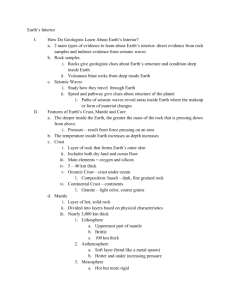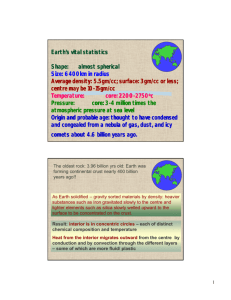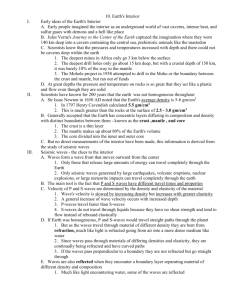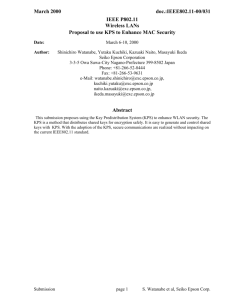Earth Parts
advertisement
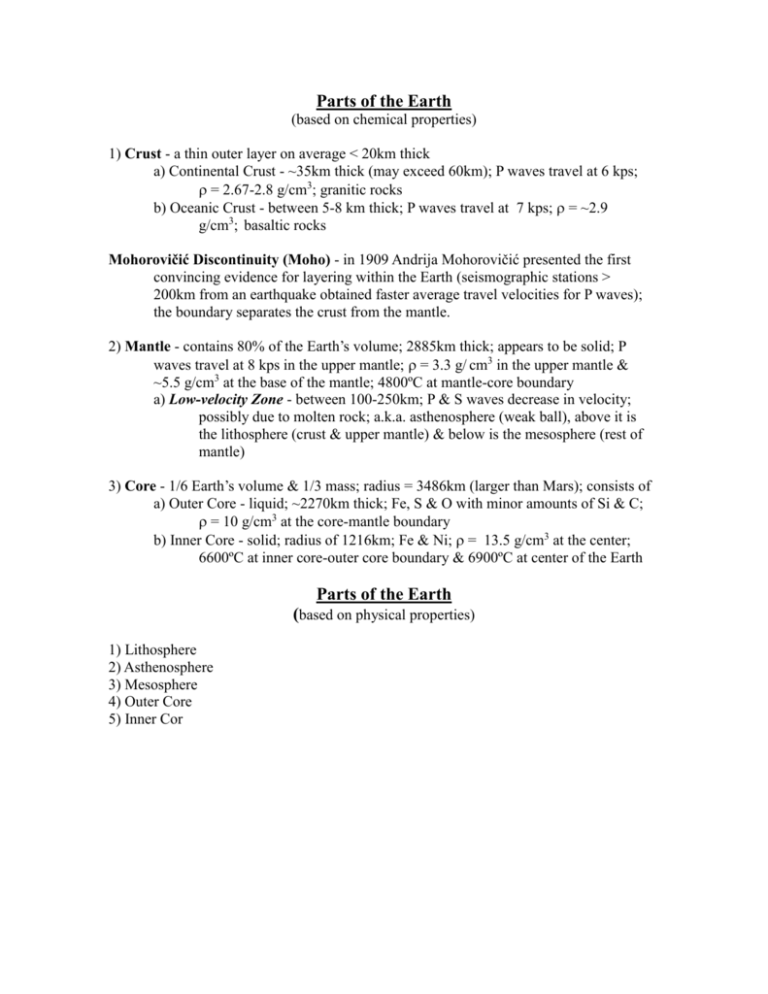
Parts of the Earth (based on chemical properties) 1) Crust - a thin outer layer on average < 20km thick a) Continental Crust - ~35km thick (may exceed 60km); P waves travel at 6 kps; = 2.67-2.8 g/cm3; granitic rocks b) Oceanic Crust - between 5-8 km thick; P waves travel at 7 kps; = ~2.9 g/cm3; basaltic rocks Mohorovičić Discontinuity (Moho) - in 1909 Andrija Mohorovičić presented the first convincing evidence for layering within the Earth (seismographic stations > 200km from an earthquake obtained faster average travel velocities for P waves); the boundary separates the crust from the mantle. 2) Mantle - contains 80% of the Earth’s volume; 2885km thick; appears to be solid; P waves travel at 8 kps in the upper mantle; = 3.3 g/ cm3 in the upper mantle & ~5.5 g/cm3 at the base of the mantle; 4800ºC at mantle-core boundary a) Low-velocity Zone - between 100-250km; P & S waves decrease in velocity; possibly due to molten rock; a.k.a. asthenosphere (weak ball), above it is the lithosphere (crust & upper mantle) & below is the mesosphere (rest of mantle) 3) Core - 1/6 Earth’s volume & 1/3 mass; radius = 3486km (larger than Mars); consists of a) Outer Core - liquid; ~2270km thick; Fe, S & O with minor amounts of Si & C; = 10 g/cm3 at the core-mantle boundary b) Inner Core - solid; radius of 1216km; Fe & Ni; = 13.5 g/cm3 at the center; 6600ºC at inner core-outer core boundary & 6900ºC at center of the Earth Parts of the Earth (based on physical properties) 1) Lithosphere 2) Asthenosphere 3) Mesosphere 4) Outer Core 5) Inner Cor






